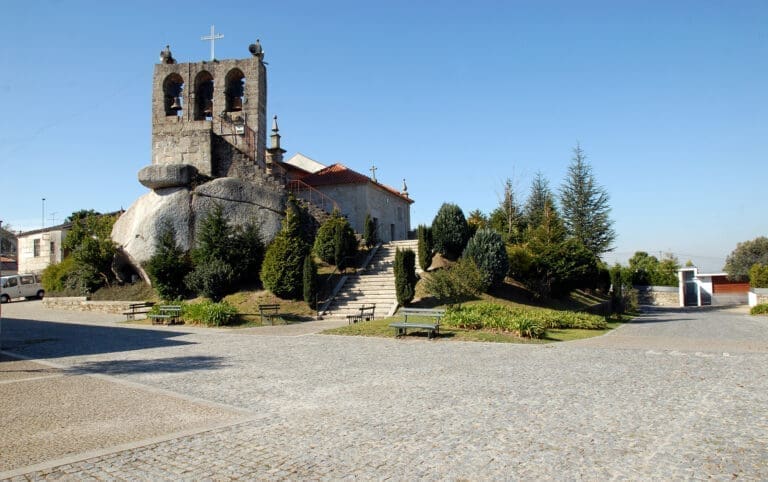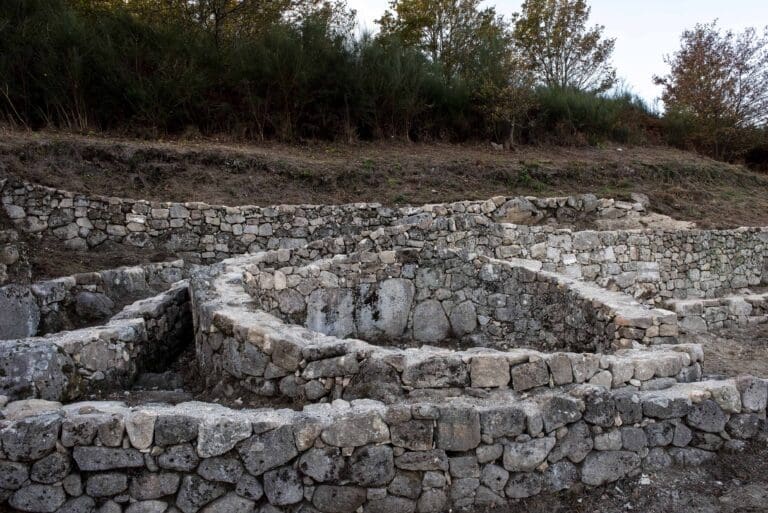The Castro de Santo Ovídio is located approximately one kilometre from the centre of the town of Fafe, in the place with the same name, where a hill emerges with a maximum altitude of 332 metres.
The promontory stands out in the valley of the Vizela River, which runs near the foot of the western slope of this mountain, topped by a hermitage dedicated to Saint Ovidio.
The Castro became known in the last quarter of the 19th century, when the construction of the staircase leading to the chapel uncovered the statue of a Galactic Warrior, acquired by the archaeologist Martins Sarmento in 1876.
The archaeological site was forgotten until it was rediscovered in 1979, when an excavator tore up the base of the eastern slope of the hill, bringing to light clear traces of a remote human occupation.
The Fafe Town Council, in collaboration with the University of Miño, sponsored archaeological excavation campaigns from 1980 to 1985, which produced important discoveries of great scientific value.
In an area of 600 m2, a remarkable set of ruins was discovered and studied, which led to the settlement being classified as a Public Interest Asset in 1980.
Although more detailed studies have not been carried out on upper platforms, it is very likely that the genesis of the settlement occurred during the second half of the 1st millennium BC.
The visible ruins correspond to the last phase of occupation of the town, between the end of the 1st century BC and the 1st century.
A street with cobbled floors gives access to a residential area where houses of indigenous tradition (circular plan) and Roman influence (rectangular plan) coexist. Small paved outdoor areas are also observed, as well as open furrows in the granite soil for drainage of rainwater, retaining walls that delimit the neighborhood, and detrital pits.

 Fafe, Northern Portugal
Fafe, Northern Portugal







